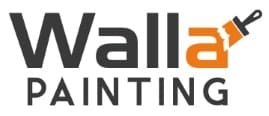Thinking of giving your kitchen a fresh, new look without breaking the bank? Painting your kitchen cabinets could be an inexpensive way to revitalize that space.
It’s amazing how a coat of paint can transform the entire kitchen. But before we grab our brushes and rollers, it’s important to know a few key tips that can make the difference between a quick touch-up and a stunning kitchen makeover.
Tackling kitchen cabinet painting can be a bit tricky, but with the right approach, we can achieve professional-looking results. Whether we’re going for a sleek modern finish or a charming rustic look, there are some tried and true steps we’ll want to follow to ensure that our cabinets turn out beautifully and last for years to come.
7 Steps For Painting Kitchen Cabinets
It’s crucial to properly plan your kitchen cabinet painting project before getting started. This involves assessing the cabinets’ current state, selecting the proper paint, and mapping out the budget.
1. Assess Your Cabinets’ Condition
First, we need to inspect the cabinets for any damage or wear. Look for signs of warping, water damage, or significant scratches. Sturdy, well-constructed cabinets are prime candidates for painting, while those with severe damage may need repair or replacement.
2. Choose the Right Paint
Choosing the right paint makes all the difference. We’ll want a durable paint that can handle daily kitchen activities. For cabinets, oil-based or high-quality acrylic paints are best, offering a smooth, durable finish. Semi-gloss or gloss finishes are ideal for easier cleaning.
3. Determine Your Budget
Budgeting is a must. The cost of painting kitchen cabinets varies widely depending on the size of our kitchen and the quality of materials we choose. We should account for all expenses: paint, primer, brushes, rollers, and any additional tools. Here’s a simple budget breakdown:
| Materials | Estimated Cost |
| Paint & Primer | $20 – $50/gallon |
| Brushes & Rollers | $10 – $40 |
| Sandpaper | $5 – $20 |
| Additional Tools | $10 – $100 |
4. Cleaning and Sanding
We want to start with a clean canvas. Remove all hardware from the cabinets and clean the surfaces thoroughly to eliminate any grease or grime. Once dry, sand the surfaces with medium-grit sandpaper to get rid of the glossy finish and help the new paint adhere better.
5. Priming Strategies
Next up, priming! It’s tempting to skip this step, but a good primer can make or break our paint job. We’ll need a high-quality stain-blocking primer to prevent any existing stains from peeking through and to give our paint a strong foundation.
Apply the primer with a smooth foam roller or a synthetic bristle brush for a streak-free finish. Give the primer enough time to dry completely before moving on to the painting stage.
6. Painting Techniques for a Smooth Finish
For the painting itself, use a high-quality use a synthetic fiber brush or a high-density foam roller to avoid brush marks. Apply paint in thin, even layers to prevent drips and buildup.
For an impeccably smooth finish, we can also consider using a paint sprayer, which gives us an even coat without brush lines, but it requires some practice to perfect the technique. It also adds to the cost of the overall project.
7. Drying and Curing Process
Let’s not rush things—patience is key during the drying phase. Follow the paint manufacturer’s instructions for dry times between coats. Typically, wait at least 24 hours before applying a second coat.
Once the final coat is done, we’re not finished yet. The curing process is where the paint hardens and becomes more durable. This can take a few days to a few weeks. During this time, it’s best to keep the cabinets untouched and free from any objects on them.
When to Call Professional Painters
When taking on the task of painting kitchen cabinets, it’s vital to know when to pass the brush to the pros. Consider the following:
- Stripping old paint can be a tedious process, and if not done correctly, it can damage the wood.
- A smooth, even application of paint requires practice. If you lack experience, you might end up with streaks and drips.
- Durable finishes are harder to achieve with DIY methods — professionals use high-quality products and techniques that last longer.
Here’s where Walla Painting steps in. We pride ourselves on taking the stress out of painting. Our transparent pricing means no unexpected costs creeping up on you.
Deciding to DIY or not comes down to time, quality, and hassle. If you prefer to leave it to experts who guarantee a top-notch and timely job, Walla Painting – serving the greater Indianapolis, IN area – is just a call away.
We cover every inch meticulously, ensuring a flawless result without the mess or stress that can come with a DIY project.
Ready for a hassle-free kitchen transformation?
Reach out to Walla Painting:
- Phone: 317-656-7045
- Website: Get a Quote Today!
We’ll handle the heavy lifting, so you can sit back and enjoy your kitchen’s new look!
